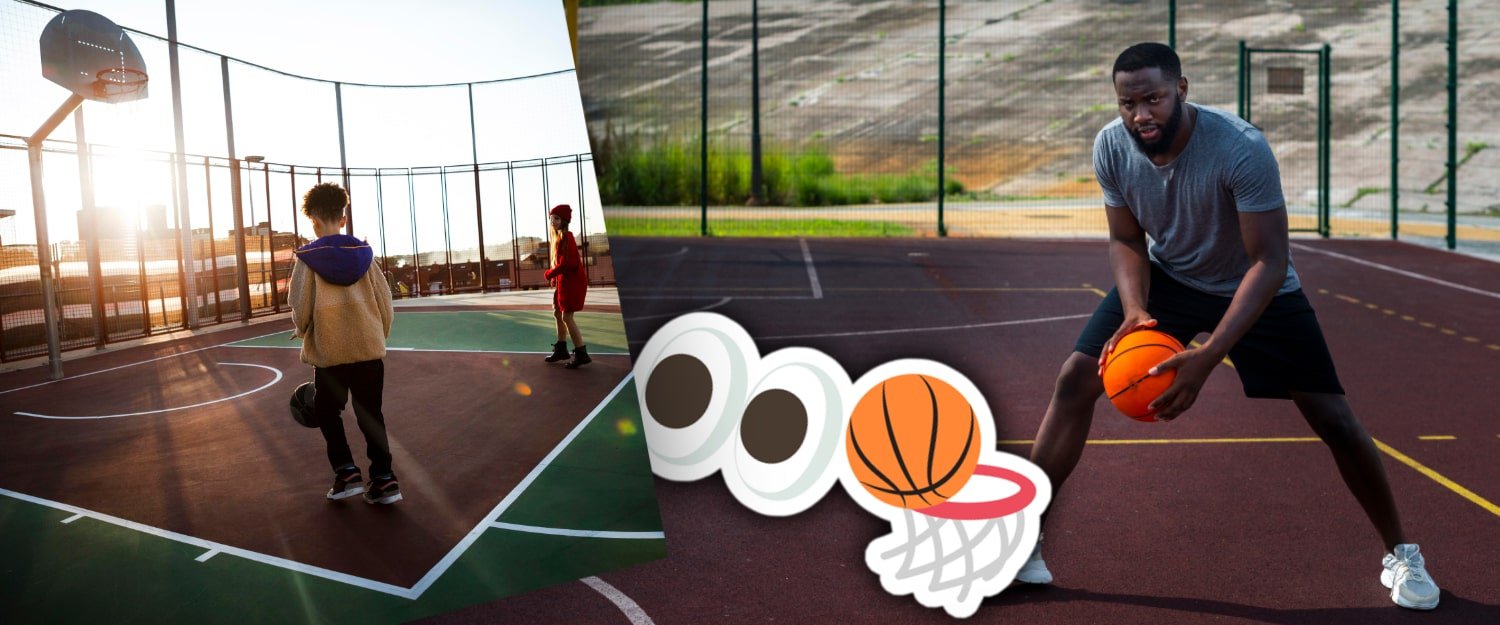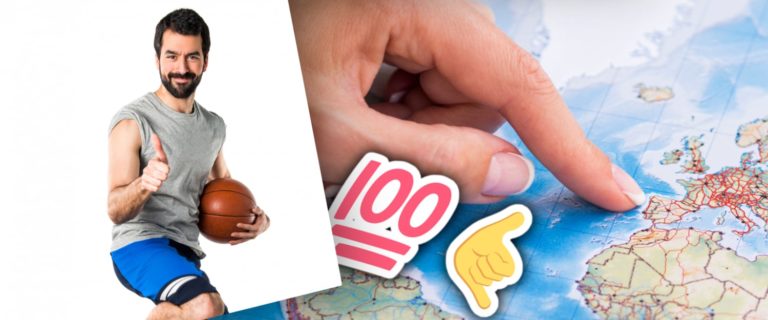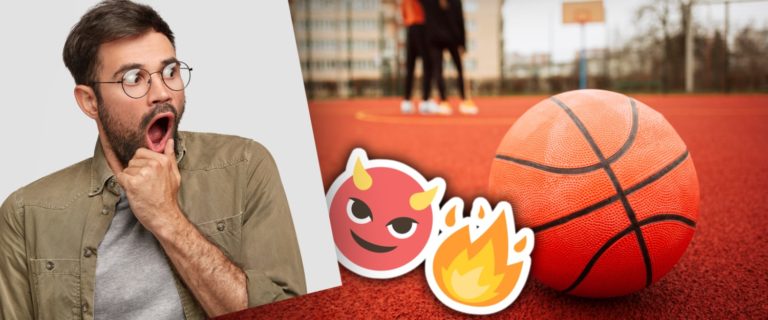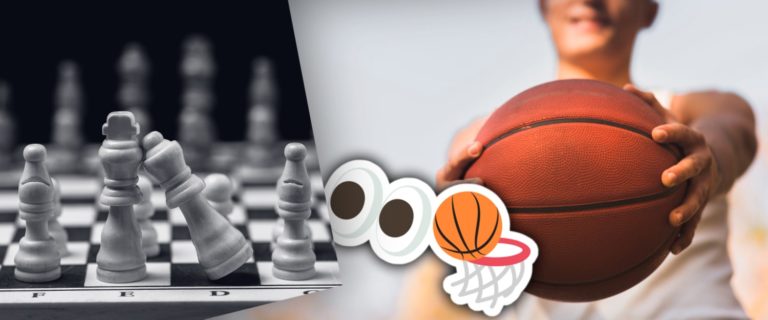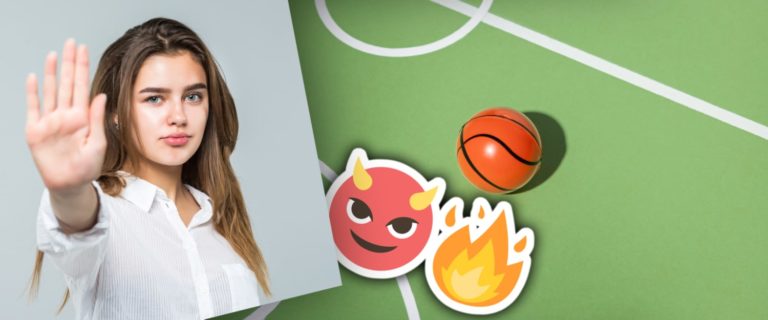Understanding Traveling In Basketball
Basketball traveling is a violation in the game of basketball. This article aims to explain traveling violations, what traveling is, and how traveling can be called during a match. All possible scenarios will be included so that you know exactly when traveling should be called.
What is Traveling in Basketball?
Traveling in basketball is a violation. It’s when a player dribbles the ball and takes too many steps without dribbling or passing it to another teammate. This traveling violation can also be called when the offensive player has taken several steps after starting to dribble.
Basketball traveling can also be defined as an infraction, where players who are holding onto the ball must not move their pivot foot from the ground before releasing the ball to another player.
The traveling violation is a formal rule in basketball. The traveling call can be called by the referee when he/she sees an infraction occur.
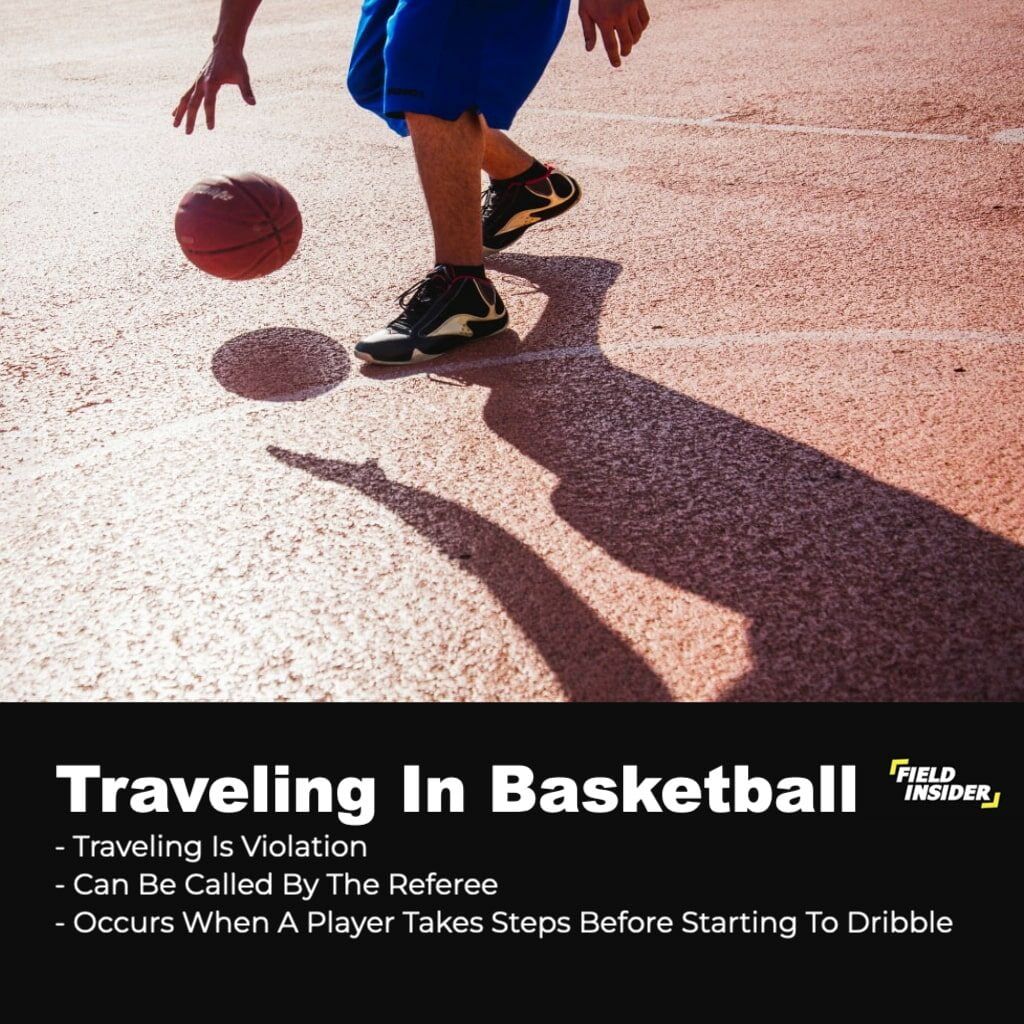
Examples of Footwork in Basketball
Euro Step
A basketball move known as the Euro step, two-step, or long lateral involves an offensive player picking up their dribble, taking a step in one direction, and then rapidly taking another stride in a different direction. It is meant to provide the offensive player a chance to get away from a defender and go for the basket.
Although the NBA used the Euro step frequently prior to 2009, it did not become legally acceptable until that year. The NBA rulebook had always stated that a player may only take one step before 2009. A player may take two steps to stop moving, pass the ball, or shoot the ball after receiving the ball while moving or after finishing a dribble, according to a 2009 amendment in the rule. “It is thought to be the first league, at any level, anywhere in the world, has officially authorized two steps,” ESPN said at the time the change was made.
Gather Step
For a player who receives a pass or gains possession of a loose ball, the gather is defined as the point where the player gains enough control of the ball to hold it, change hands, pass, shoot, or cradle it against his body.
For a player who is in control of the ball while dribbling, the gather is defined as the point where a player does any one of the following:
- Puts two hands on the ball, or otherwise permits the ball to come to rest, while he is in control of it;
- Puts a hand under the ball and brings it to a pause; or
- Otherwise gains enough control of the ball to hold it, change hands, pass, shoot, or cradle it against his body.
A player who gathers the ball while progressing may (a) take two steps in coming to a stop, passing or shooting the ball or (b) if he has not yet dribbled, one step prior to releasing the ball to start his dribble.
Step-back Shot
The Step Back is a “counter move.” It is used only after the initial drive is stopped. You must force the defender to stop the drive first by trying to get by him with your drive.
This move is most effective around the basket, in the lane, or inside 15 feet. Once you move beyond that range, it becomes a very difficult and low-percentage shot. It should not be a staple of a player’s perimeter offense, but can be an extremely valuable weapon in the paint.
Here are the steps to properly execute a step-back:
- Attack The Defender First
- Get Into The Defender
- Press Off The Front Foot
- Land On Back Foot First
- Keep Shoulders Forward
- Straight Up On The Shot
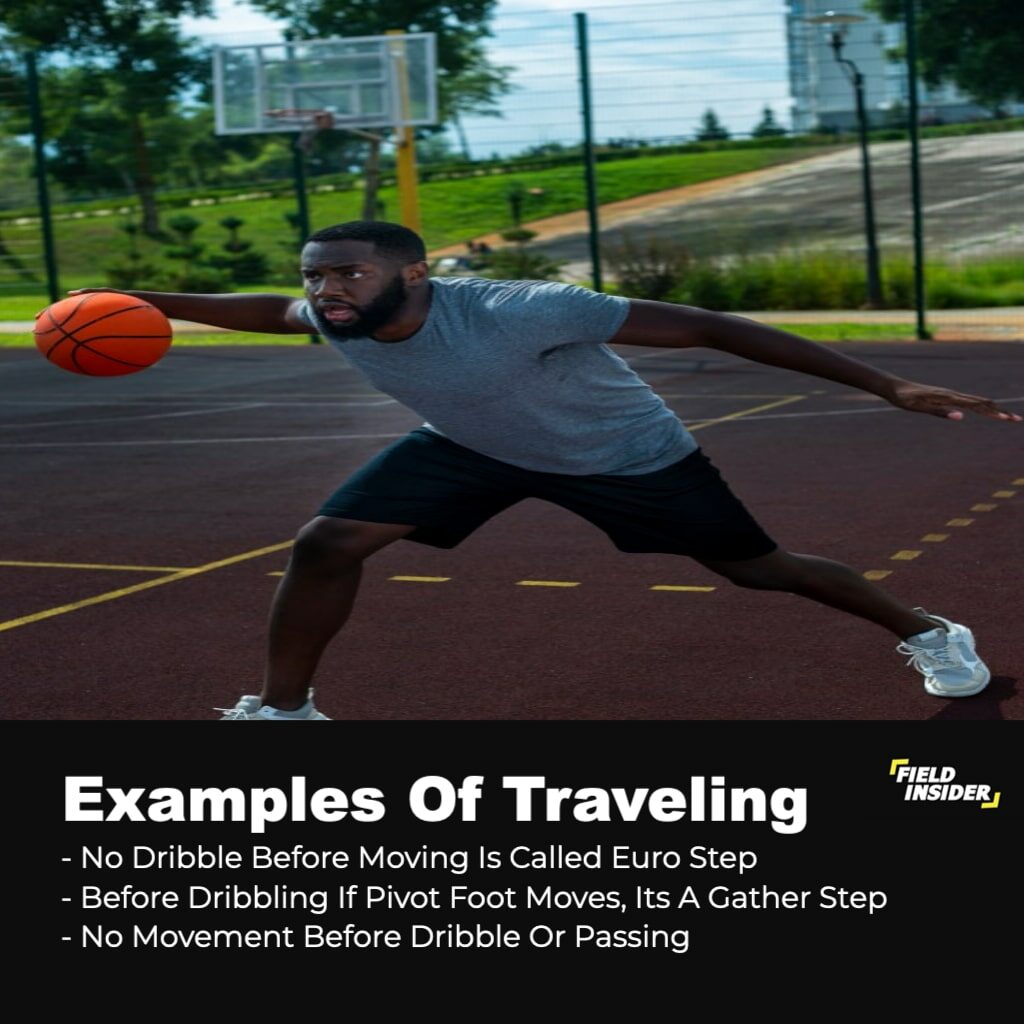
Spin Move
When the offensive player receives the ball in the low post, he or she either fakes in one direction before spinning in the opposite direction, goes up for the shot right away after receiving it, or takes one hard dribble before taking it.
Up-and-Under
A shot fake (the up) and a step-through make up the technique known as the up and under (the under). The offensive player advances past the defender and attempts a clear, undefended shot after the ball carrier first fakes a shot by raising the ball above their head in an apparent attempt to take a shot.
Hakeem Olajuwon and Kevin McHale were regarded as masters of this move, which is typically performed by post players (power forwards and centers).
When a post player drives alongside the baseline, fakes a layup with one hand beneath the ball while pivoting to the outside for a jump hook, this move is also referred to as “The Dream Shake” after Hakeem “The Dream” Olajuwon. The post man can pump fake the hook and step through for the undefended layup if the opponent recovers and jumps at the hook shot.
Jab Step
A player takes a jab step, also known as a side step, when they hold onto the ball while dribbling and move their non-pivot leg in a forward or side motion.
This technique is utilized to evaluate the defensive posture and gaps of the defender. The jab step can be used in conjunction with the pump fake, drive, shot, and crossover drive to entice the opponent out of their defense.
Both forward Carmelo Anthony and the late great Kobe Bryant have a reputation for using the jab step. A distance is created between the player and the defender as a result of the player doing this, allowing them to quickly shoot a mid-range jump shot, a three-pointer, or a drive “to the lane.”
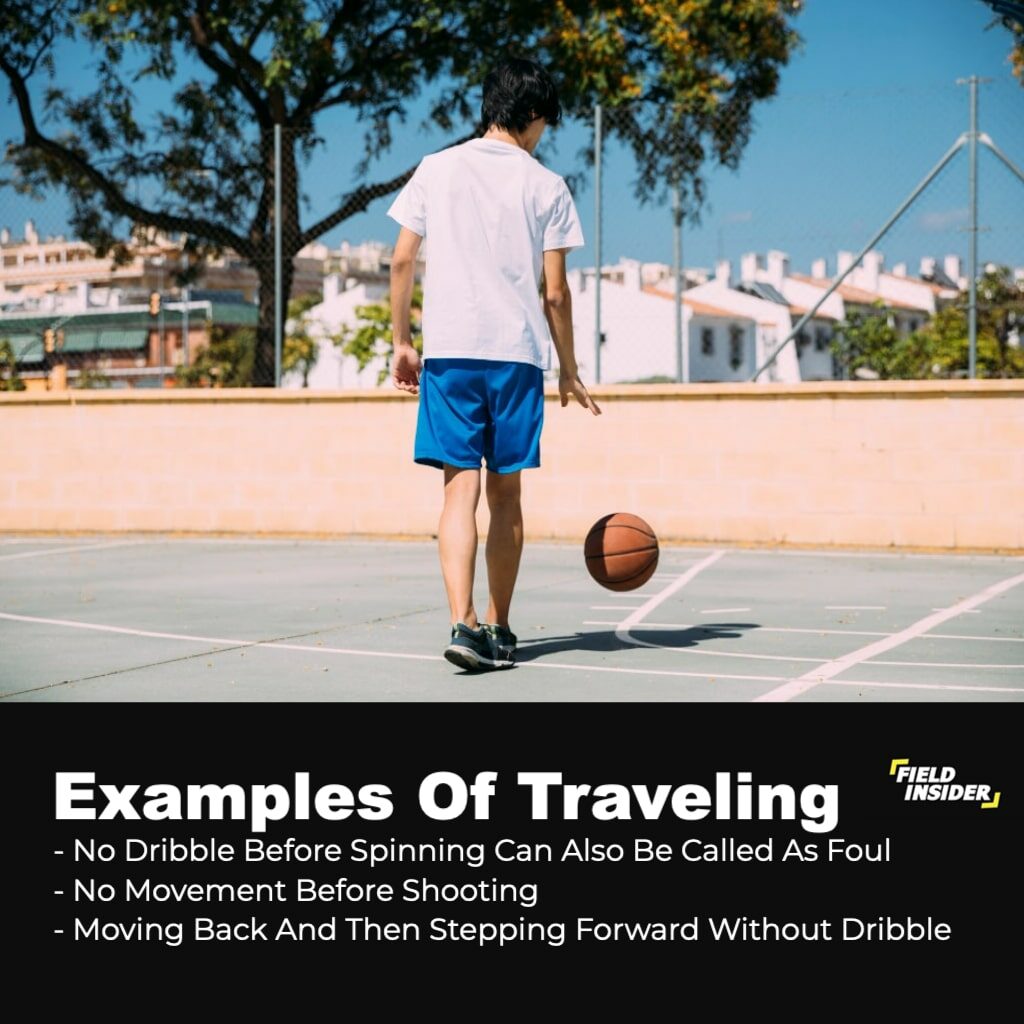
What Happens When a Traveling Violation is Called?
Turnovers
Basic traveling violations that occur when traveling is called are turnovers and traveling calls for players on offense or defense. Hence, a traveling violation calls for possession of the ball to go over from one team to another, and play continues following this turnover under the official’s discretion.
NBA Rules about Traveling in Basketball (Rule No. 10 Section XIII – Traveling)
a. A player who receives the ball while standing still may pivot, using either foot as the pivot foot
b. A player who gathers the ball while progressing may take (1) two steps in coming to a stop, passing or shooting the ball, or (2) if he has not yet dribbled, one step before releasing the ball. A player who gathers the ball while dribbling may take two steps in coming to a stop, passing, or shooting the ball.
- The first step occurs when a foot, or both feet, touch the floor after gaining control of the ball.
- The second step occurs after the first step when the other foot touches the floor. Or both feet touch the floor simultaneously.
- A player who comes to a stop on step one. When both feet are on the floor or touch the floor simultaneously may pivot using either foot as his pivot. If he jumps with both feet he must release the ball before either foot touches the floor.
- A player who lands with one foot first may only pivot using that foot.
- A progressing player who jumps off one foot on the first step may land with both feet simultaneously for the second step. In this situation, the player may not pivot with either foot and if one or both feet leave the floor the ball must be released before either returns to the floor.
c. In starting a dribble after (1) receiving the ball while standing still, or (2) coming to a legal stop. The ball must be out of the player’s hand before the pivot foot is raised off the floor.
d. If a player, with the ball in his possession, raises his pivot foot off the floor. He must pass or shoot before his pivot foot returns to the floor. If he drops the ball while in the air, he may not be the first to touch the ball.
e. A player who falls to the floor while holding the ball. Or while coming to a stop, may not gain an advantage by sliding.
f. A player who attempts a field goal may not be the first to touch the ball. If it fails to touch the backboard, basket ring, or another player.
g. A player may not be the first to touch his pass. Unless the ball touches his backboard, basket ring, or another player.
h. Upon ending his dribble or gaining control of the ball. A player may not touch the floor consecutively with the same foot (hop).
- PENALTY: Loss of ball. The ball is awarded to the opposing team on the sideline. The nearest spot of the violation but no nearer the baseline than the foul line extended.
Conclusion
We hope to have answered any questions you had about this topic, but if not please let us know. Do you agree with these rules? or do they make it too difficult for players to get open shots off of drives and cuts? Let us know below! Are you interested in more awesome stuff about basketball? Explore our entire section about it here.


